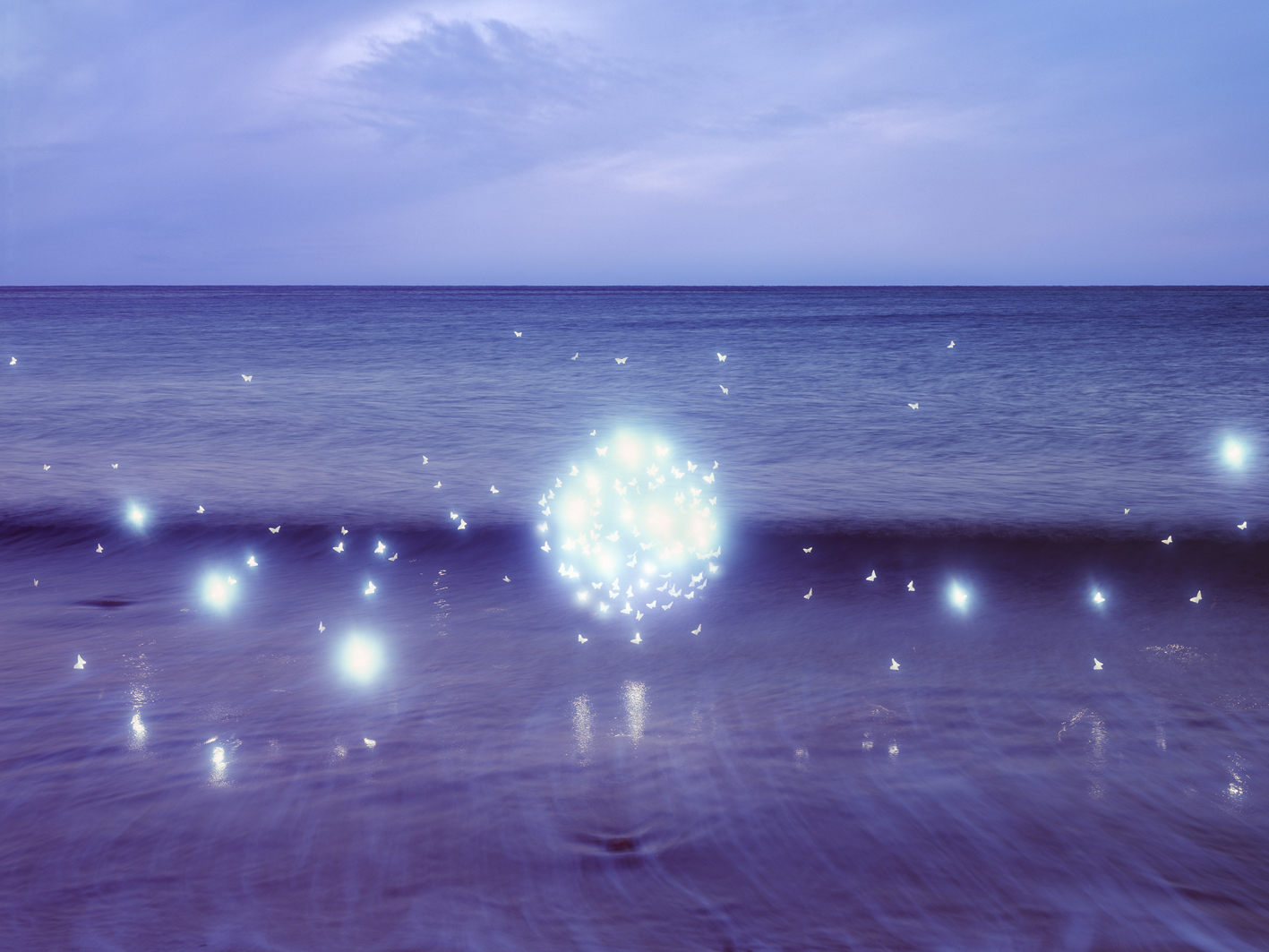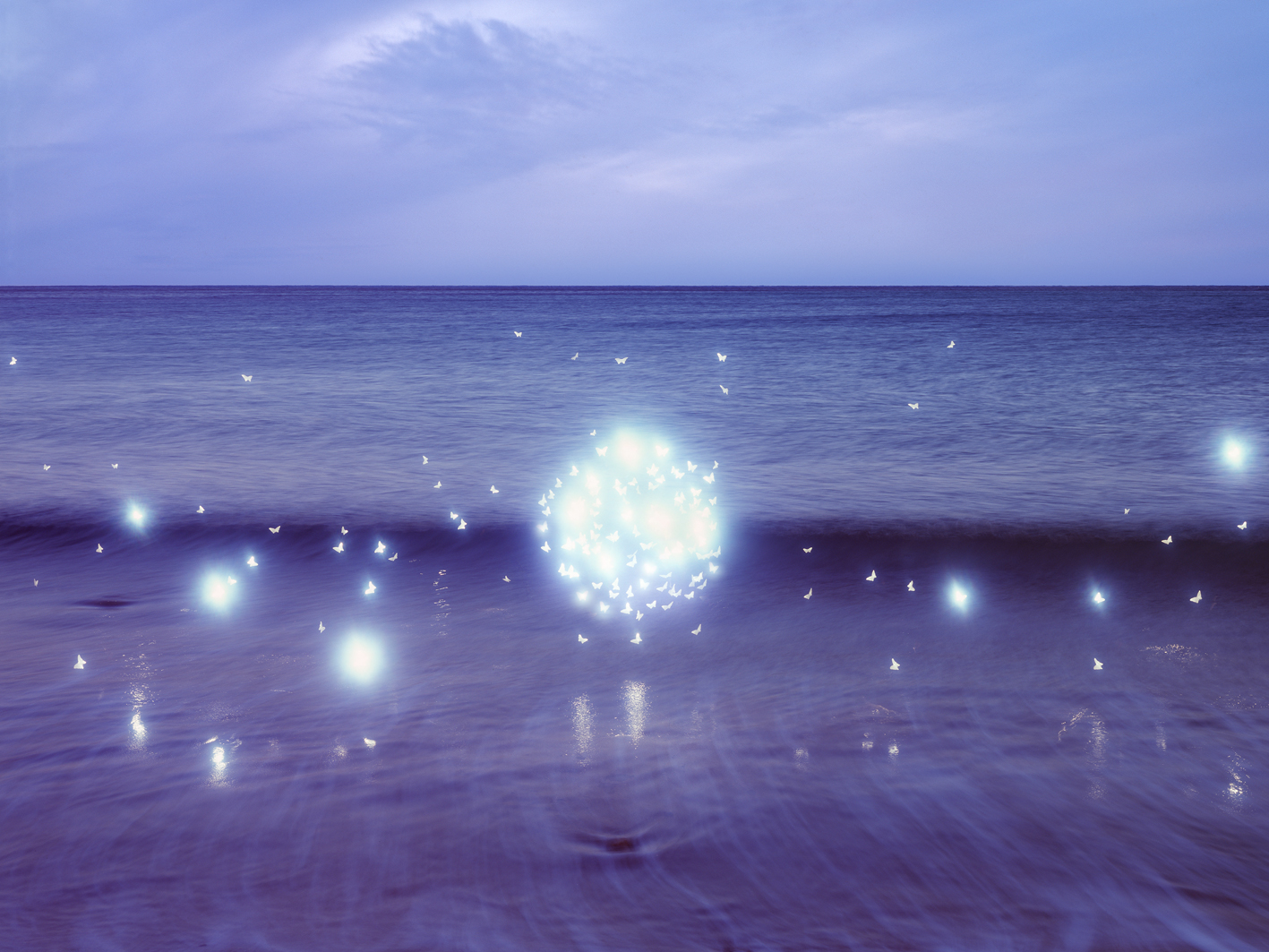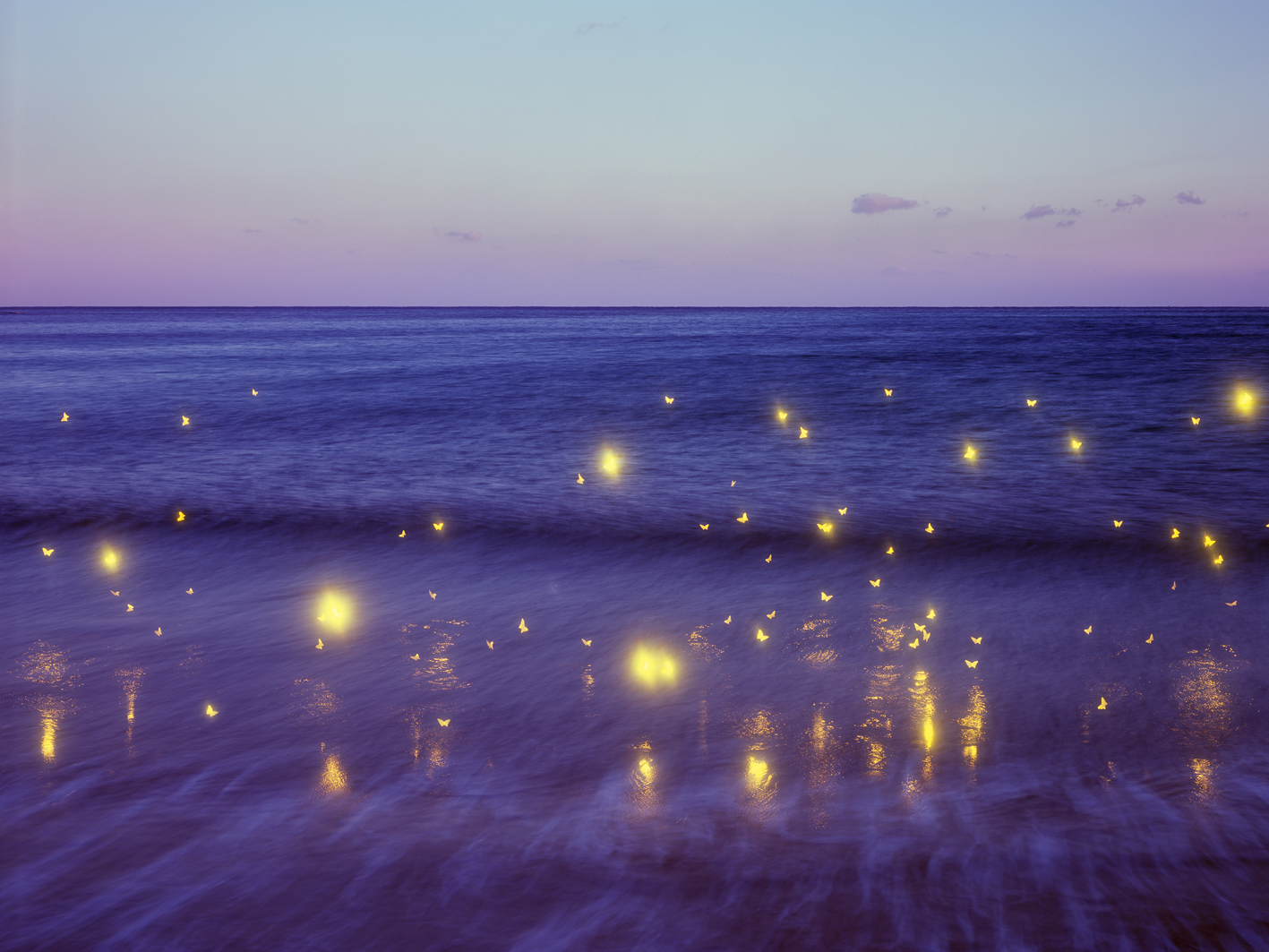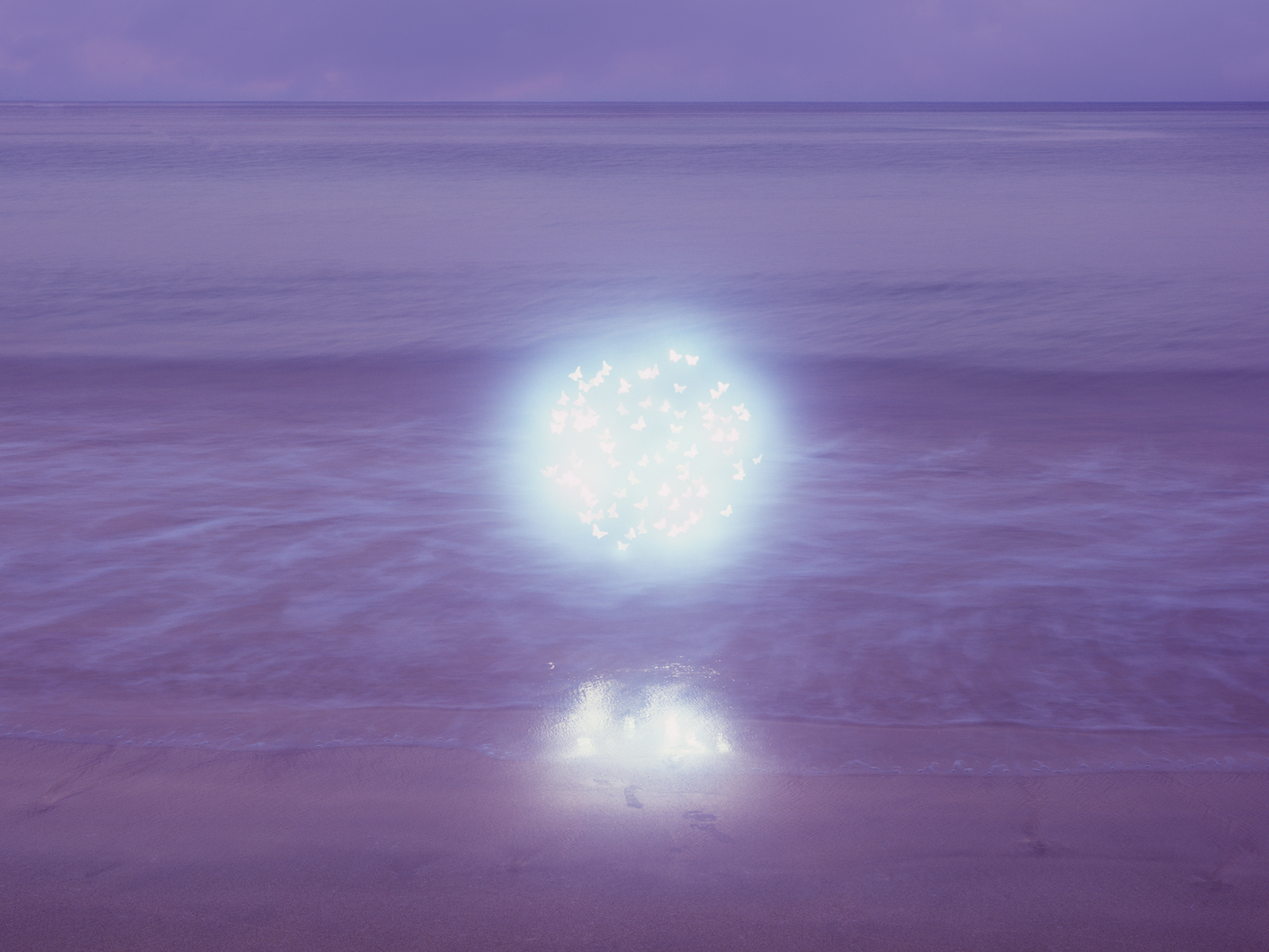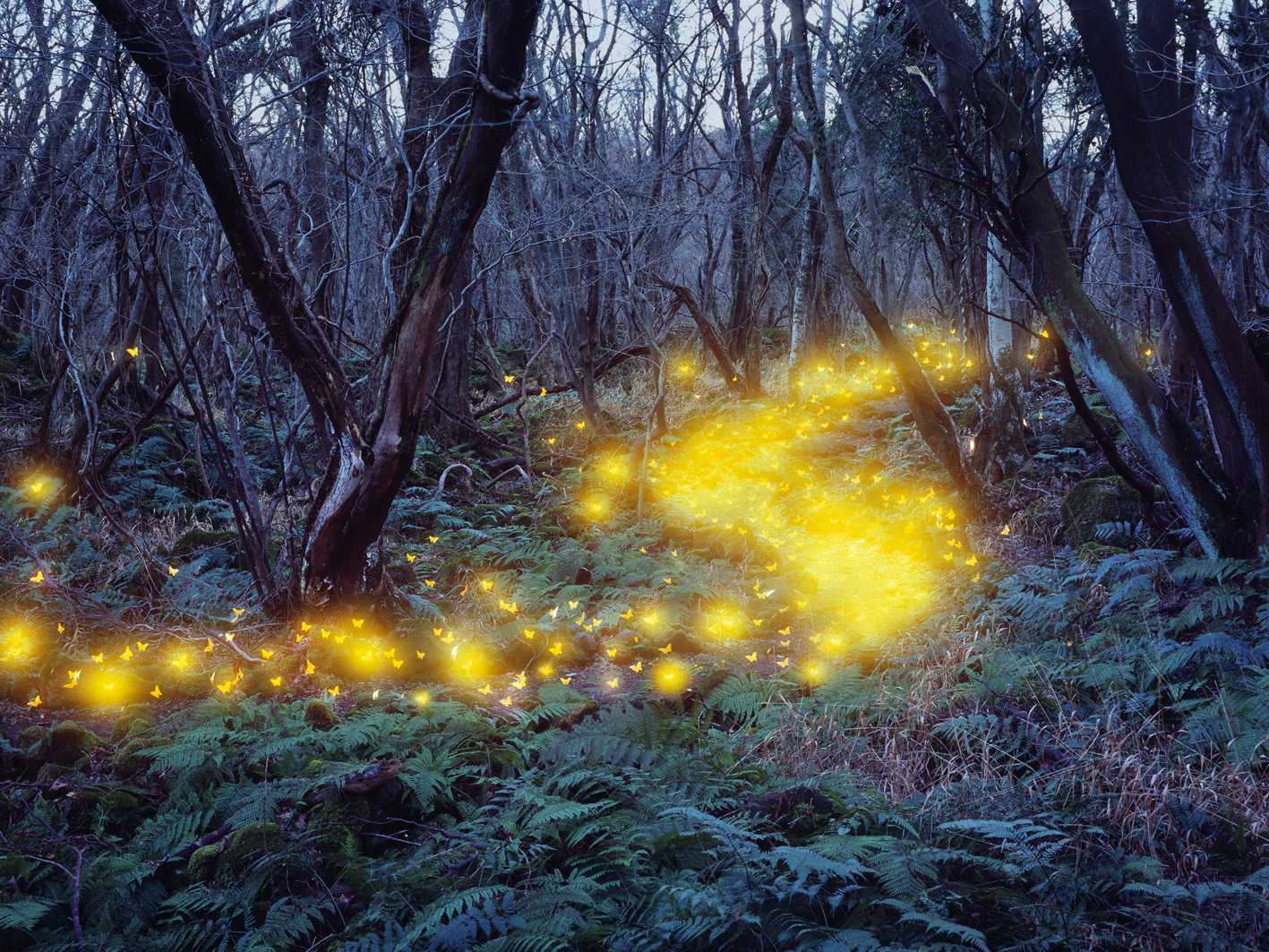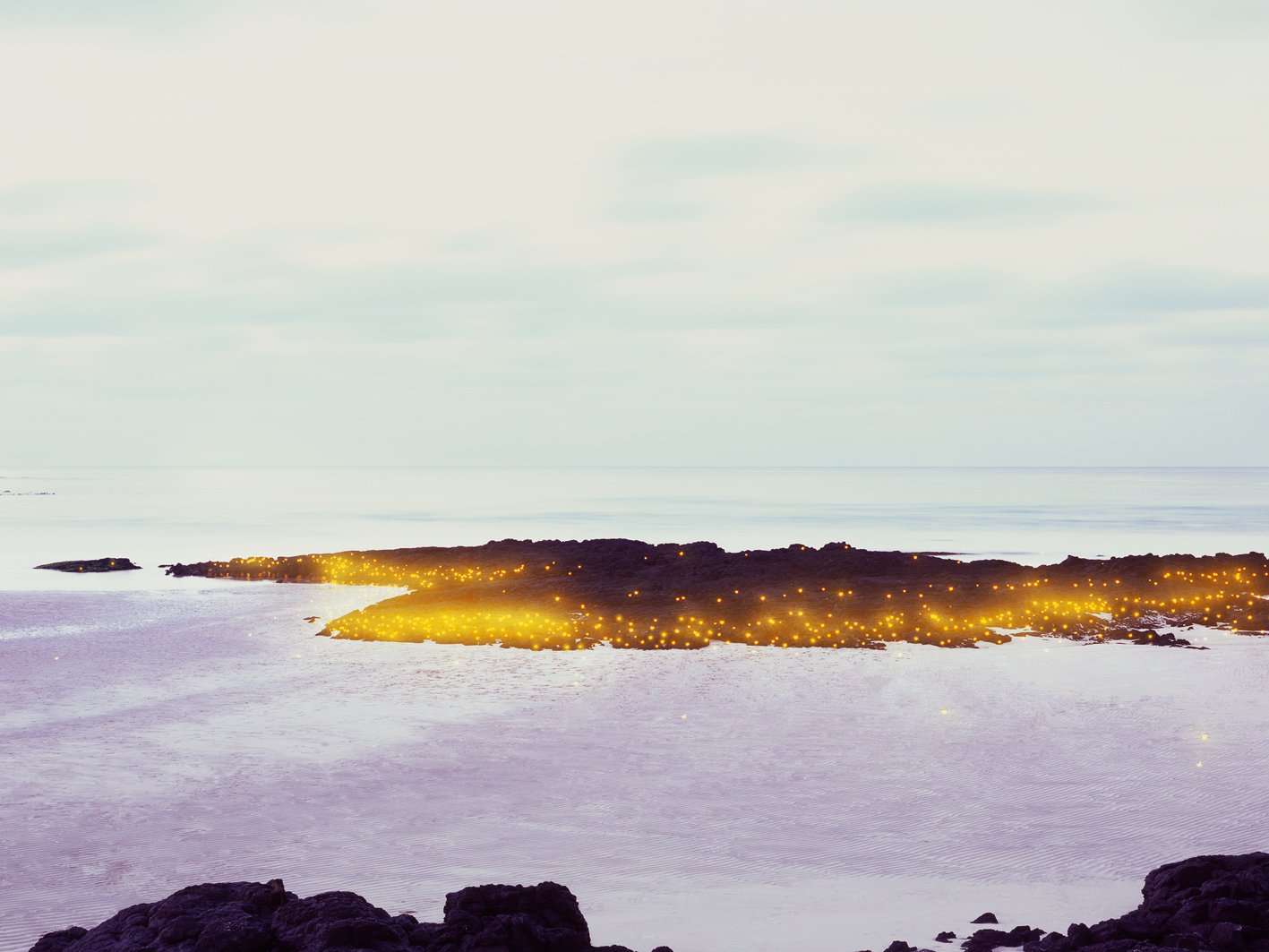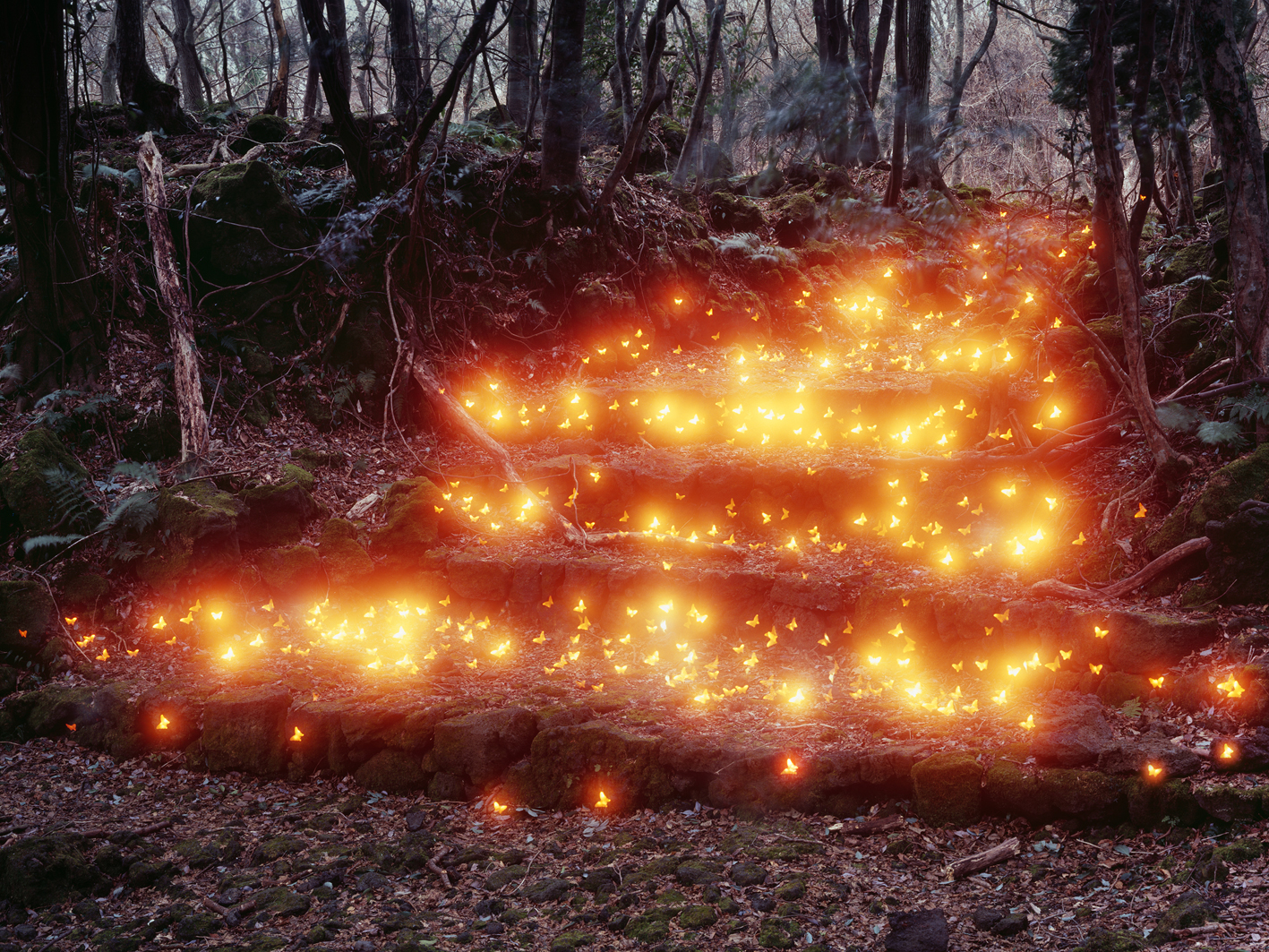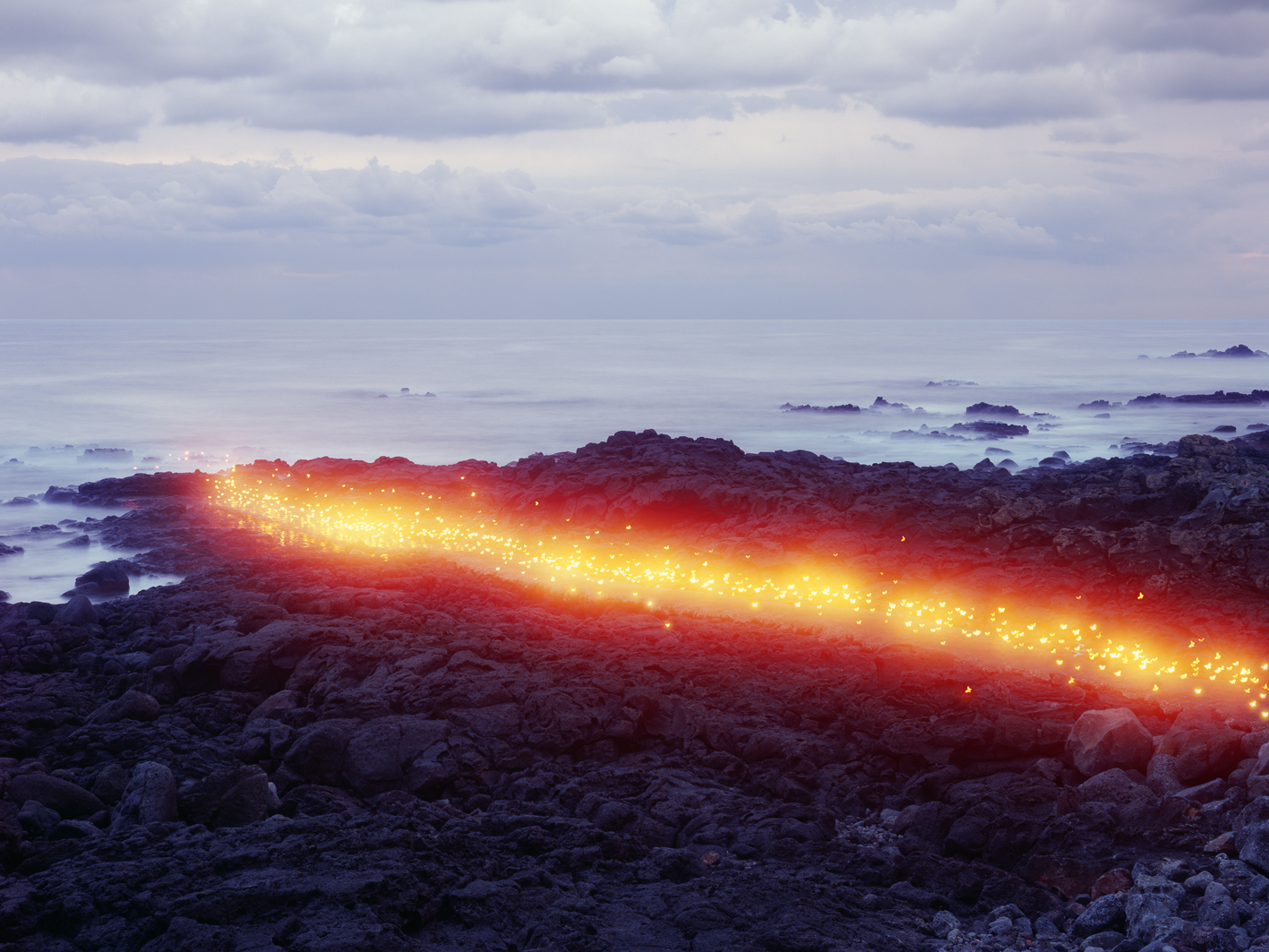Photographer Lee Jeong-rok has continued landscape work to interpret as sacred places by recording the unseen and dynamic wonders of nature through a contemplative view or intervening directly, centering around plains, fields and mudflats in the Southwest, with his mythological world view looking for the prototype of human life and culture. Especially, “Mythological Landscape” and “Private Sanctuary” that were shaped by transparent orbs or shining seeds like eggs put at places where the sky and the earth connect and produce life, let us witness natural life transfer to human history; moreover, his “Tree of Life” in which sacred energy spreads in light let us imagine the prototypical mythology of humankind. In his “Decoding Scape”, the photographer expanded his mythological view of nature to a made-made cultural place or a place where violence has been inflicted, and sought to communicate directly with nature through codifying a language of silence in nature. Namely, he decoded through light in forms like hieroglyphs based on Yin-Yang and Five Elements Theory contained in the consonants and Three Materials Theory of vowels in Hangeul and marked down the rich natural language that is undecipherable by conventional human codes, though it is omnipresent in nature. He transformed the mystery of existence that is indescribable by already created codes into image characters, symbols that are a combination of light waves, consonants, or consonants and vowels.
Signs are a way of understanding the world and a place to make relationships with others. As semiologist Perth noticed the ability of signs that talk to us in the universe full of signs, the appearance of nature and the dynamic power of sound were translated into different languages by various human cultures and became the foundation for communication. As the mysterious being of nature has transcendence that cannot be completely translated by a human language, the photographer expressed, in his “Decoding Scape”, through landscape text, the silent message that nature sends to us by shaping or combining Hangeul, a phonogram, through hieroglyphs that mimic the form or meaning of nature. Light that signs radiate is a place “of opening” where the existence of nature is exposed and plays the role of opening for it to appear in the “phenomenon” of hieroglyphs. Rich meaning and colors that are possessed by nature with a circulation of the past, the present and the future which are impossible to prescribe with own homogeneous meaning, are seen as doubled through light waves covering signs.
Codes that are combined with the consonants like ㅁ, ㅂ, ㅍ, ㅅ and ㅇ (for water, fire, grass, life and void) which derived from elementary memories of the prototypical location of nature or a civilized place, and basic vowels symbolic of the sky, the earth and human, became “symbols” of nature as a complete whole whose parts cannot be taken apart through attributes of landscape, though codes are “parts” of mythological nature. As was mentioned in the work notes, “ㅈ” that is floated on the sea and on the mud flat is broken up into “ㅡ" looking like a horizon and “ㅅ" looking like a human standing on two feet, symbolizing the throbs of life. Here Yin-Yang and Five Elements and universal order embedded in nature were not made abstract as signifiers, i.e., means to simply transmit messages, but were shaped as a whole with proper nouns. Light opens the existence that was hidden in the violent and rational consciousness of humans and shines the road to symbolic and emotional communication for meaning that cannot be conceptualized.
Lee Jeong-rok expressed the world of silence in nature by recalling proper nouns through doubling or differentiating by nature and code, and reality and fiction in “Decoding Scape”. Dolmens that help us remember natural landscape, or sources and history, and hieroglyphs inscribed around towers are not just signifiers that lose substance and float, as simple signs for exchange, but geographical points where beings appear, houses are built, and incidents take place. The house that is segmented by signs, however, is not a permanent one but a temporary one that is a trace to be replaced continuously so as to visualize the complete meaning and shaped by différance that is postponed infinitely. Therefore, “Tree of Life” is a symbol itself that is a concentration of themes of an exhibition as it opens a venue of communication for diverse seeds of Hangeul, the alphabet, and Arabic numeral to be rewritten as new texts by spectators themselves. The photographer exposed the narrowness of conceptual cognizance that is not to be fixed through human knowledge and let us focus on the internal otherness of nature through plastic and imaginative landscape text that unraveled the existence and meaning of nature by images and signs. Though the hieroglyphs inscribed in the landscape look strange as codes that are instantly undecipherable to spectators, if they look at the signs as image characters not as codes to be decoded, they could be thought of as a new meaning through the individual imagination of spectators and thus, could we ourselves be thinking signs and planets in the universe full of signs?
Kim Hwa-ja, Ph. D. in Esthetics (Hybrid Institute for Future Culture, Sungkyunkwan University)
Tree of Life
Lee, Jeong-lok’s photo work has his own unique style by symbolizing with importing his personal situation into other things by revealing group unconsciousness on the earth and the history with archie type and by landscaping spiritual atmosphere combining with myth, which is called to heal and boost human’s life. Currently he induces his mythic and spiritual world to the real world and visualizes it.
He attracts people to ‘Tree of Life’ through its series at this exhibition. Even though the true nature of life has been existed since the beginning of the earth but we couldn’t see it. This exhibition makes us look the mystique tree of life surrounded by spiritual aurora. Lee, Jeong-lok embroiders secretly spiritual stories and images in the center of ‘the tree of life’. The stories and images which couldn’t be seen and heard surround dimly the tree of life. Dreamy stories and images glimmer in the shiny trace of light. Blessed and endless life stories and images which once were given but lost, and were sought and looked, are contained in the photos.
This kind work was already shown through the former mythic landscape and the personal sacred place but this exhibition only focuses on the tree of life. Tree of life is the medium to show the spiritual world which is believed in but cannot be seen. By this way, the spiritual photographic world is spread through the gate which is open to the nirvana world in the center of the real world. As these images may be suspected to some computer graphics, they are directed and created, but not computer graphics. To get this image, he went to the same place over and over again or brought needed objects to the stage like taking a family photo to get this outcome. These analog images needed much manual effort using nature source of light, artificial source of camera, and some equipment. Light in this progress was not only the substance to make this image possible but also symbolical medium to show spiritual shape at the moment of a flash. Above all, light out of a flash was transformed to the aurora of fruits and the images of angels, and spattered around of the tree of life.
Especially the series of the tree of life shown at this exhibition moved its background from nature to stage, which can be felt simple in some way and also can be felt dramatic in some other way. This is because Lee, jeong-lok got rid of a background and only focused on the variation of the tree and light to emphasize the spiritual aurora woven in the tree of life. By this way, the seen world can be reduced but the impression and lingering imagery of unseen world could make unusual outcome. Lee, jeong-lok’s photos filled with plain and mystical atmosphere make people see, feel and experience the spiritual world which intervenes in the human’s life and history by spreading the spiritual world which can be seen but is believed in to the real world.
Ju Ryong-bum(Curator)







